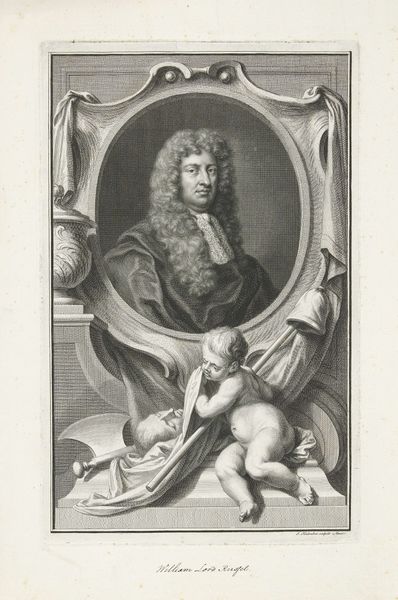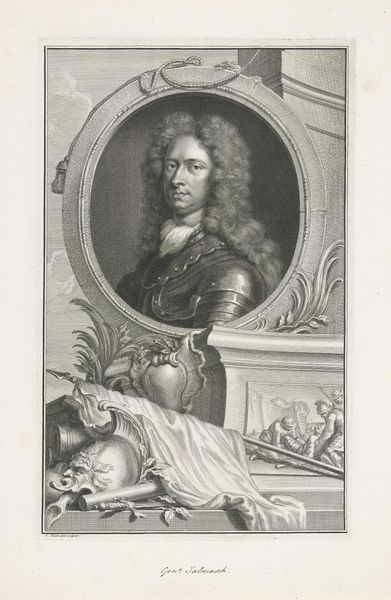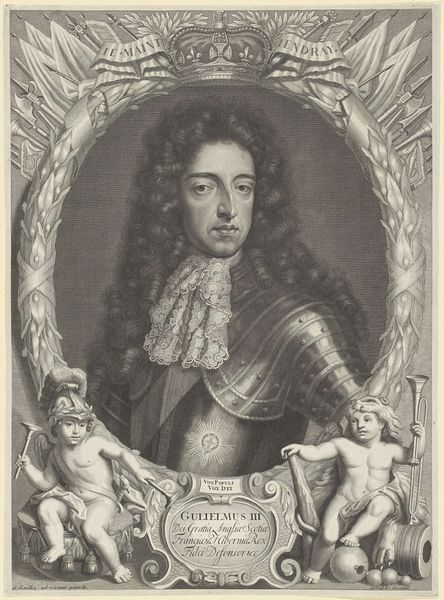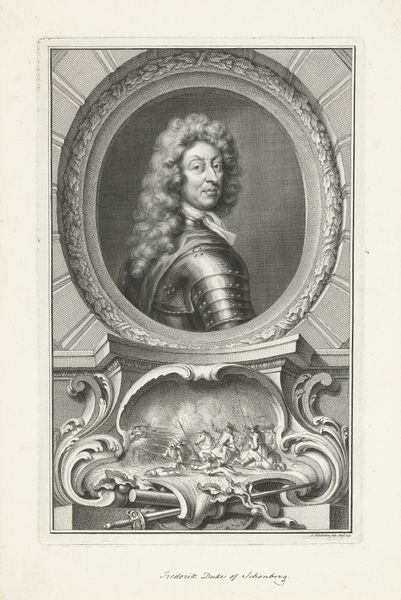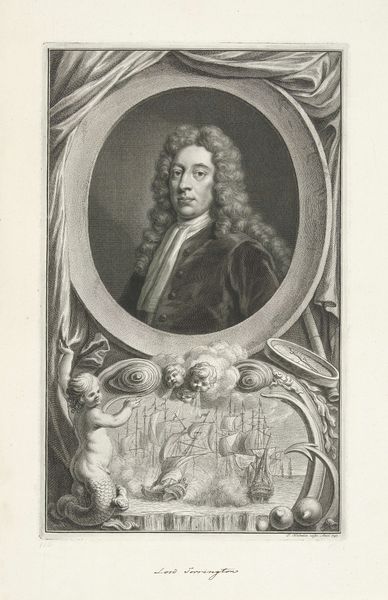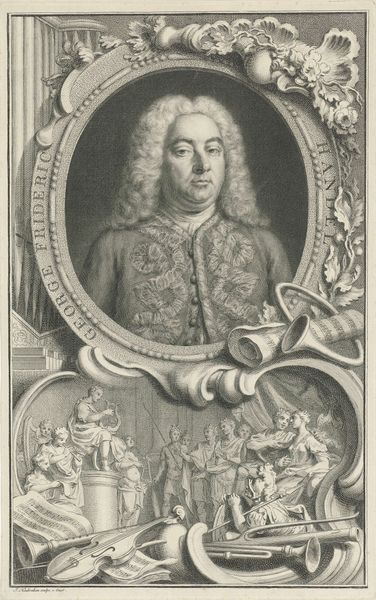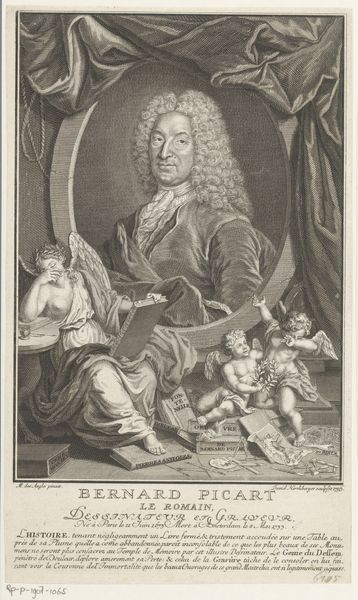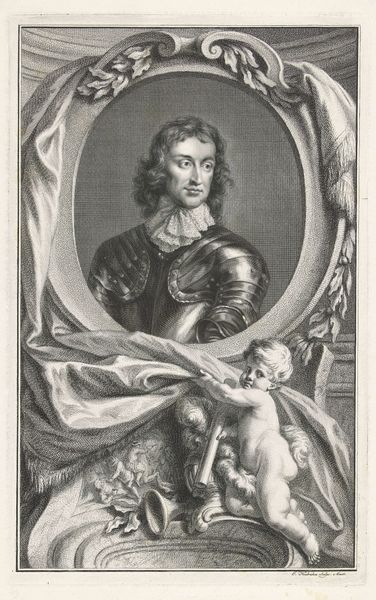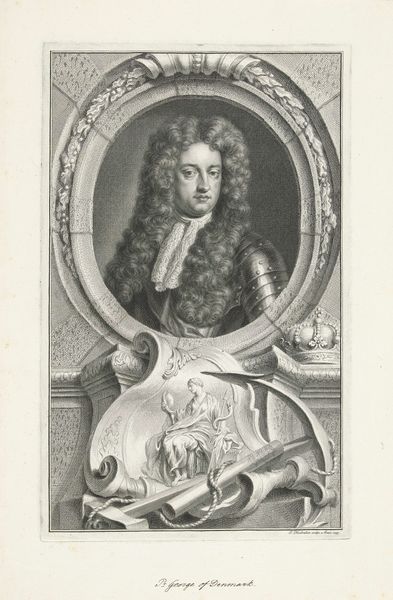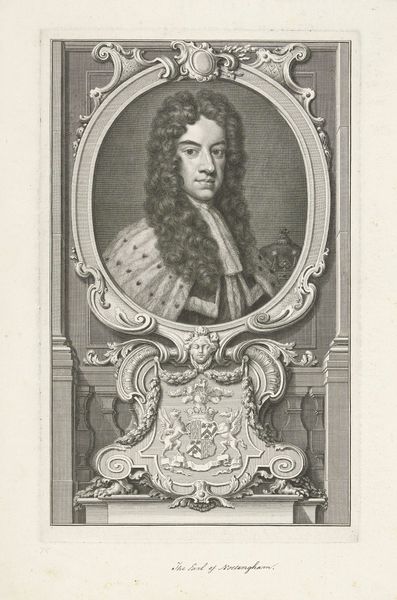
engraving
#
portrait
#
baroque
#
old engraving style
#
history-painting
#
engraving
Dimensions: height 356 mm, width 219 mm
Copyright: Rijks Museum: Open Domain
Editor: Here we have a work from 1745, "Portrait of John Churchill, Duke of Marlborough," created by Jacob Houbraken. It's an engraving, and I find the level of detail remarkable. How should we interpret the symbolic language used in the composition? Curator: It’s crucial to understand the political role of imagery during the Baroque era. Consider this portrait not merely as a likeness but as a carefully constructed piece of propaganda. How do the Duke’s attire and the surrounding iconography contribute to a particular narrative about power and authority? Editor: He is wearing armor, suggesting a military leader, and is framed by symbolic figures and objects, which could signify triumph. Would this have been common? Curator: Absolutely. The museum as we know it was nascent. Prints like this one, reproduced and circulated widely, were critical in shaping public opinion and enshrining certain historical narratives. The choice to portray the Duke surrounded by martial symbols and allegorical figures would solidify his image as a heroic and divinely favored leader. What impact might it have had on viewers? Editor: I see it. The engraving emphasizes the Duke's valor and reinforces his standing within the social and political framework of the time. Sort of early PR? Curator: Precisely. The politics of imagery often dictated what stories were told and who got to tell them. Recognizing this dynamic gives us insights into power structures and the social function of art. What has this exploration revealed to you? Editor: I had not initially considered the political purpose prints may have had at the time. Now, seeing the Duke in the context of Baroque propaganda, the engraving tells a clearer, more nuanced story about power. Curator: Indeed. It’s vital to examine these artworks with a keen eye to their original context and how they functioned within their specific socio-political landscape.
Comments
No comments
Be the first to comment and join the conversation on the ultimate creative platform.
